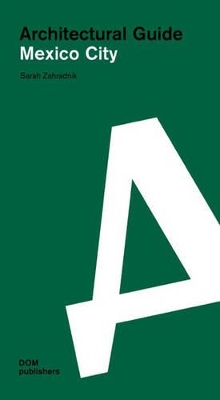Architectural Guide
2 total works
The Architectural Guide Australia presents over 200 projects in the vast island continent that is home to natural wonders, coastal settlements, and tropical climates up north. Each chapter, dedicated to one of the nation's eight state capitals, presents buildings that represent the major moments in the country's architectural history, from its colonial origins to the contemporary era.
The book includes a short introduction to Australia's most influential architects as well as essays by Harry Seidler, John Gollings, and David Bridgman. Seidler's essay argues for the incorporation of sunlight and shadow, phenomena so distinctly characteristic of the country's climate, into architectural design both from an aesthetic and practical standpoint. Gollings offers a historical sweep of Australian architecture before identifying the three major architectural strands of contemporary Australia. Bridgman explores the challenges of designing in the hot-humid tropics in particular, outlining the climatic considerations that must be accounted for when building in those regions. Each chapter also includes an interview with a prominent architectural practice active in the respective city. The architects offer their views on the characteristics of Australian architecture and comment on their own practice within this context.
With its comprehensive map, aerial photographs, and array of images, this book is the ideal companion for those exploring Australia.
The book includes a short introduction to Australia's most influential architects as well as essays by Harry Seidler, John Gollings, and David Bridgman. Seidler's essay argues for the incorporation of sunlight and shadow, phenomena so distinctly characteristic of the country's climate, into architectural design both from an aesthetic and practical standpoint. Gollings offers a historical sweep of Australian architecture before identifying the three major architectural strands of contemporary Australia. Bridgman explores the challenges of designing in the hot-humid tropics in particular, outlining the climatic considerations that must be accounted for when building in those regions. Each chapter also includes an interview with a prominent architectural practice active in the respective city. The architects offer their views on the characteristics of Australian architecture and comment on their own practice within this context.
With its comprehensive map, aerial photographs, and array of images, this book is the ideal companion for those exploring Australia.
From the capital of the Aztec Empire to one of the largest megalopolises today, Mexico City has withstood enormous changes throughout its history. An overarching mosaic of Aztec, Hispanic and contemporary Western cultures has determined the exuberant metropolis we know today, with both local and world-renowned artists and architects having invested their talents in this capital. Large-scale urban projects - such as the construction of the National Autonomous University of Mexico (UNAM) - have furthermore placed this city on the UNESCO World Heritage List owing to their tremendous artistic detail and innovative designs.
With its array of 230 photographs, drawings and specified maps, the Architectural Guide Mexico City will take you on an exhaustive tour of 100 buildings and monuments dispersed throughout the city.
With its array of 230 photographs, drawings and specified maps, the Architectural Guide Mexico City will take you on an exhaustive tour of 100 buildings and monuments dispersed throughout the city.

